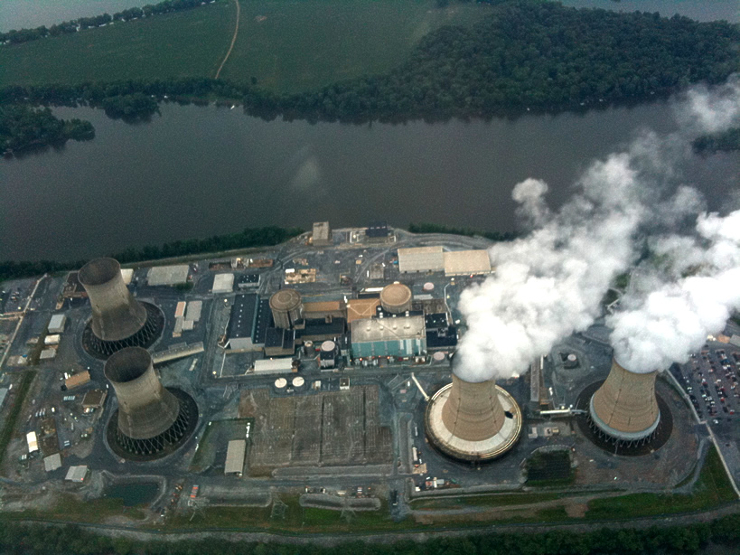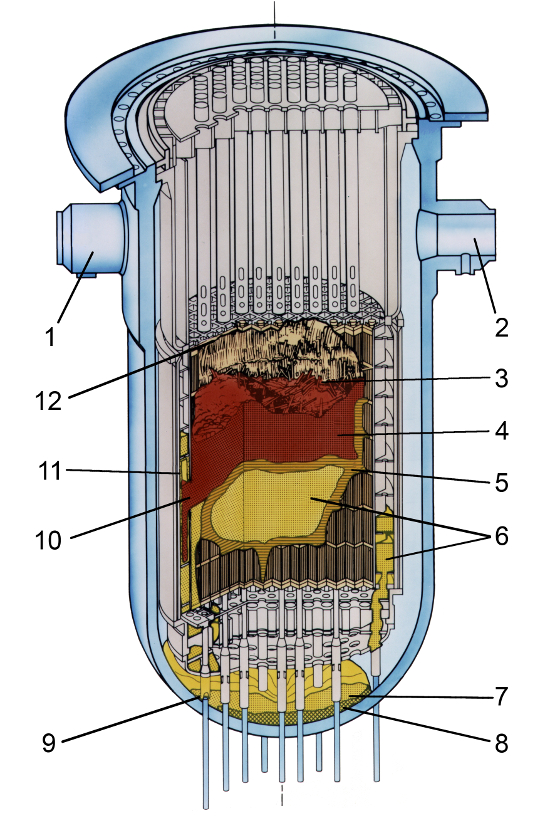CSCI 491: Three Mile Island
The worst commercial nuclear accident in the United States occurred at the Three Mile Island Nuclear Generating Station near Middletown, Pennsylvania. The incident occurred on March 28, 1979 and was rated with a severity of level 5 on the International Nuclear Event Scale (INES). The INES is a 7-level logarithmic scale for measuring the severity and impact of nuclear accidents. Chernobyl, which was examined last week was rated a 7 on this scale. A level 5 accident means there was damage to the reactor but little radiation release. What caused this accident?

The Three Mile Island (TMI) accident started around 4:00 am on March 28, 1979. The main pumps that provide water to the reactor have automatically shut down. The reactor quickly heats the water within the core and causes pressure within the reactor vessel to increase. Increased pressure automatically opens a valve to lower the pressure to allow water to more easily be pumped into the reactor. This valve is connected to a solenoid, which is connected to a light in the control room to indicate to reactor operators if the valve is opened or closed. When powered, the solenoid opens allowing flow through the valve. The light only indicates if the solenoid is receiving power and not the actual position of the valve. If the valve were to become stuck open while depowered the light would indicate that the valve has been closed. The valve became stuck and allowed large quantities of steam to rush out of the reactor vessel. Reactor operators believe the indicator light indicates that the valve is definitively closed. As water turns to steam, pressures within the reactor vessel increase leading reactor operators into believing that there is too much water within the vessel. Operators drastically reduce the amount of water flowing to the reactor. Confusion throughout the rest of the day makes it difficult for reactor operators and off site technicians to figure out the exact state of the reactor. Eventually at 7:50 pm, the reactor is brought back up to normal operating pressure and one of the main cooling pumps is restarted, allowing cooling water to flow through the reactor. By this point the reactor vessel is full of explosive hydrogen and partially melted fuel. Through incredible luck and good reactor design, TMI reactor 2 did not explode or release large quantities of fission products into the atmosphere.

Ultimately studies found little increase in radiation in the areas around the TMI plant despite anecdotal evidence of radiation exposure in livestock. Luckily TMI didn’t irradiate a large portion of the United States in the same way Chernobyl irradiated large areas of Europe. Today, TMI reactor 2 remains permanently shut down, having been defueled and all coolant water disposed of. TMI reactor 1 continues to generate power until its license expires in 2034. At the end of TMI reactor 1’s license both reactors will be decommissioned, requiring safe long-term storage of radioactive materials from both reactors. The TMI accident is a reminder that when interfacing with complex machinery, operators need to understand every aspect of the indicators. Reactor operators need to be able to take information from multiple indicators and determine the best course of action similar to a pilot flying a plane.
Now we move to the most modern nuclear disaster, that occurred on March 11, 2011 at the Fukushima Daiichi Nuclear Power Plant. What was the chain of events that caused one of the largest power generating stations in the world to experience such a catastrophic failure?